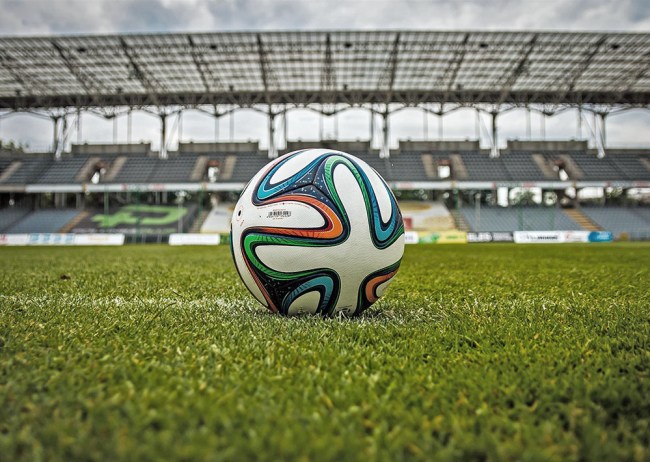With Real Madrid’s 1-0 victory over Liverpool in Paris, the curtain has been drawn on the 21/22 season. But the glory of sport is that there’s always next season. The Premier League will be back, the Champions League will return, and we’ve got the novelty of a winter World Cup to look forward to. And even though it’s a year until we’ll discover who’ll be the champions of England and of Europe, there are still five absolutely amazing matches to look forward to before we say goodbye to 2022.
#5: The Community Shield (July 31)
Yes, you read that right. The Community Shield is one of the biggest matches left this year. Yes, it’s a glorified friendly, and yes it doesn’t count as a trophy, but this year’s Wembley curtain-raiser has something very important. Narrative.
FA Cup winners Liverpool took Premier League champions down to the wire on the last day of the 21/22 season. So this game will raise all sorts of questions ahead of the 22/23 contest. Will Mane remain at Liverpool? Will Klopp be able to reinvigorate a team that went from quadruple hopefuls to double losers in the space of a week? Will Erling Haaland prove to be the game-breaker that takes City to an absolutely uncatchable level?
We’ll learn a lot from this game. If Liverpool seems weaker and City stronger, we might learn that the Premier League title is almost a foregone conclusion.
#4: The North London Derby (TBC)
For decades, Arsenal fans celebrated a unique holiday. St. Totteringham’s Day. The day of the season that it was mathematically impossible for the Gunners to be caught by their North London rivals. But for the past six seasons, it’s Spurs who’ve finished above their rivals in the league. It’s Spurs fans who’ve needed Champions League tickets while Arsenal has been making do with the Europa League.
Can Tottenham secure a seven-year streak of finishing above Arsenal? Or is it time for an Arsenal resurgence? The first North London Derby of the season will give us some indication, even though form and history suggest the home side usually triumphs. Arsenal hasn’t won an away derby since 2014, and Spurs need to go back to 2010. Will that change in 2022?
#3: The Women’s European Final (July 31)
Women’s Euros tickets have been selling in record numbers, and the final at Wembley is expected to host a capacity crowd. Defending European champions the Netherlands have dropped in the world rankings of late, and pundits are tipping Spain and France for the title. But England’s Lionesses aren’t far behind in the odds, and they’re comfortably ranked as one of the ten best teams in the world.
Manager Sarina Wiegman will be looking to her men’s team counterpart for inspiration. Gareth Southgate took a mostly unfancied England’s men’s team to the final of the 2020 Euros, so the women must be hoping to go one better. Football may just be coming home – and from a slightly unexpected direction.
#2: The Manchester Derby (TBC)
If the Community Shield will tell us a lot about the eventual destination of the title, the season’s first Manchester Derby might tell us something about the long-term prospects of a team who expects to be perennial challengers.
City is the finished article. An established manager, a settled team, and one of Europe’s most promising – and effective – young strikers. They expect to win the league. They expect to win the Champions League. They’ll expect to win the season’s first derby.
If ten Hag’s Red Devils can make sure that expectation comes to nothing, we’ll have some idea of how his much-needed rebuild is progressing. City strolled through an uninterested United midfield as they strolled to a 4-1 win last time out. A committed, professional – and perhaps victorious – performance from the red half of Manchester would be a massive statement.
And with Erling Haaland out for revenge against a team whose volatile ex-captain crippled his dad, there’s a hefty dose of personal narrative in play too. Definitely worth getting your hands on Manchester United tickets.
#1: The 2022 World Cup Final (18 December)
It had to be. Everyone wants World Cup tickets, and everyone wants to see their team in the final. This year’s competition is incredibly hard to call. Defending champions France were shambolic at the Euros, while Euro runners-up England can call on even more young talent than two years ago. Brazil will always fancy their chances, while Argentina and Portugal know this is the last chance for Messi or Ronaldo to win the ultimate prize.
And then of course there are the unknowns, the dark horses. Hosts Qatar will benefit from a home advantage in very difficult conditions, Senegal has a team that’s quietly packed with top-level talent, and Denmark will rally around their returning talisman Christian Eriksen.
No matter which two teams are fighting for glory, the World Cup Final will be a must-watch, can’t-miss affair. It’s the biggest match left this year.












